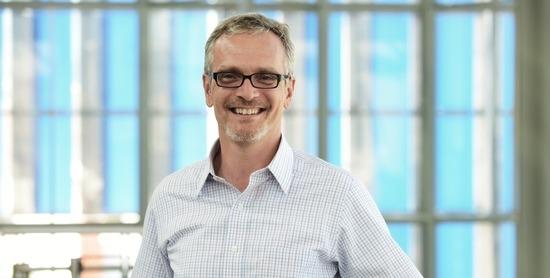Volkswagen Puts Forests on the Ledger


Our economy is like a giant organism that lives and breathes value. Arteries bring revenue to sellers, and veins carry cost away from buyers. Some vessels also circulate back in to nourish and regulate the economy itself. When a new source of value is created, new pipelines are constructed to connect it up. In recent years, humanity has come to realize that the entire economy, rather than existing in a world of abstraction, is actually fully contained within the natural world. This realization requires some significant modifications to be made in order for the economy to become reality-based and therefore sustainable.
As work on these modifications begins -- and as our understanding of what the economy is morphs from that of a machine into that of a living thing -- new partnerships are required to bring representatives to the table. They then act as agents for entities that were previously not represented in the conversation, such as forests, for example, or rivers. This is very new business, but it is very real and very important. We’ve only come to recognize our economic disconnection from reality after some essential boundaries critical to the maintenance of life have been breached.
That is why I found myself standing recently on a steel bridge deck in Northern California with representatives from Volkswagen of America. We were in the Garcia River Forest, a 24,000 acre tract that is under restoration. Speaking to us was Scott Kelly, timberlands manager with the Conservation Fund’s North Coast staff. Kelly explained why the fund spent $400,000 on the bridge replacement. The previous bridge was on its way out structurally, but it had also allowed significant amounts of sedimentation to wash into the creek each time it rained. Not only is the creek critical to the health of the forest, but it also contains Steelhead trout, and Coho salmon, which are endangered in this area.
A healthy forest is the best way to sequester carbon that we know of. Sediment prevention efforts like these have kept of total of 12,000 dump trucks worth of sediment out of the waterways. About a third of the Garcia River watershed, which serves numerous communities downstream, resides within this preserve.
The bridge and various other restoration projects were paid for with funds from VW as part of a new carbon credit transaction which was brokered by 3Degrees, the third partner in this triune. A few years ago this might have been considered an unlikely alliance, but the climate is not the only thing that is changing.
For Volkswagen, this is part of a holistic approach to ultra-low carbon mobility. That effort is spearheaded by the launch of the 2015 e-Golf with its 70 to 80 mile cruising range, and equivalent fuel economy of 116 eMPG. The carbon offsets will cover the emissions created from e-Golf production, distribution and up to approximately 36,000 miles of driving.
There’s more. The automaker set a target to reduce the carbon dioxide emissions of its entire fleet by 90 percent by 2050. That, it said, will happen one step at a time, as each new vehicle will improve upon its predecessor by 10 to 15 percent.
Emissions at every step of the product lifecycle will also be addressed, from the supply chain, through production, throughout the vehicle’s life and beyond. The company's fuel-economy target of 58 mpg by 2020, is well ahead of the U.S. EPA’s 54.5 mpg by 2025. The commitment also shows up in its LEED Platinum manufacturing facility in Chattanooga, Tennessee, the first of its kind.
The 2015 e-Golf also comes with a Roadside Assistance Plan, should drivers ever need a jumpstart, to quell those range-anxiety fears. As for its performance, suffice it to say that the Golf (family) was chosen as this year’s Motor Trend Car of the Year. The judges found that the e-Golf drove most like a “normal car” among the electric vehicles in contention.
VW also supports the Big River and Salmon Creek Forests, which contain an additional 16,000 acres, also in Mendocino County, California.
The Conservation Fund works the interface between the environment and the economy. One way to protect a piece of land is to manage it in a way that provides economic value to the community while preserving its natural ecosystems.
The forest lands managed by the fund has portions that are left untouched, while other areas are used commercially in a carefully managed, sustainable manner. Many of the forest lands the organization owns rely on sustainable logging operations to support themselves financially. The Garcia River tract is its first forest to venture into the world of carbon offsets. Considering the relatively young trees there, it’s a good fit at this point in time. The fund currently oversees some 300,000 acres, about 73,000 of which are in California's North Coast region. Those forests provide the equivalent of 60 full-time jobs. Its long term goal is to protect 5 million acres by 2030.
3Degrees provides green power and carbon offset products and services to Fortune 500 companies, utilities, green building firms, and other organizations that are working to become more sustainable. 3Degrees also partners with VW on the McKinney Landfill operation in Texas that captures methane, so that it can be utilized as an energy source rather than leaking into the atmosphere.
Together these three partners have found a way to construct a bridge. I’m not just talking about the one spanning the creek. I’m talking about a bigger bridge that can connect our rivers and forests to our economy -- not by ruthlessly exploiting them, as was done in the past, but by selective harvesting and mostly allowing them to remain standing and flowing. That way they can do what they do best: provide the natural services that all of us need to live healthy lives.
Images Courtesy of Volkswagen
Ed Note: Travel expenses for the Author and TriplePundit were provided by Volkswagen.
From Fishing Nets to Carpet Tiles: A Sustainable Supply Chain For the Future


The leading carpet tile producer Interface has an update on its engagement with the Net-Works fishing net recycling program, and the partnership offers a window into the future of global manufacturing. Today's manufacturers can pick and choose from any number of renewable and recycled materials, and Interface chose to go with recycled fishing nets, reclaimed from ocean waste. That provides the company with a sustainable supply chain that directly engages the company in the pressing global issue of marine waste, while offering a new source of income to distressed communities, all on top of producing a high-quality product.
A sustainable supply chain solution for ghost nets
Interface has crossed the TriplePundit radar a few times over the past six years. Back in 2013, we took note when the company expressed an interest in sourcing carpet fiber made from castor oil. That effort resulted in the first bio-based nylon used by Interface, dubbed Fotosfera.
Bio-based products are renewable, but they do open up some potential problems down the road, as illustrated by Coca-Cola's bio-based beverage packaging, the PlantBottle. Coca-Cola is dedicated to increasing its use of plant-based plastic, but the company also foresees that it must keep planning ahead to meet new land and water resource challenges posed by the growing demand for bio-materials, biofuels, bio-pharmaceuticals and other products.
Recycling programs like Net-Works can skirt around those issues, and the Net-Works program is carefully planned to build multi-level corporate responsibility directly into the sustainable supply chain.
Interface sources carpet fiber based on recycled nylon fishing nets from Net-Works for its "Net Effect" collection, and last fall the company pledged to step up its efforts. The partnership includes the Italian fiber manufacturer Aquafil and its Econyl brand of nylon fiber made from reclaimed fishing nets. The partnership also includes the Zoological Society of London, which has adopted a strategy to provide local communities with economic tools that can help them conserve their natural resources.
Other partners include two organizations based in the Philippines: Southern Partners and Fair Trade Corp. and Negros Women for Tomorrow Foundation. To complete the circle, a funding partner in Net-Works is the British government's global Darwin Initiative, which aims to protect habitats and enhance biodiversity.
It all comes together around the issue of "ghost nets" -- improperly discarded, abandoned or lost fishing nets. A 2009 United Nations report on ghost nets found that "large amounts of fishing gear lost at sea or abandoned by fishers are hurting the marine environment, impacting fish stocks through 'ghost fishing' and posing a hazard to ships." The report estimated that approximately 10 percent of all ocean waste consists of ghost nets.
In the past, ghost nets did not pose a cumulative threat, because fishing nets were made of natural materials and would eventually degrade in water. However, most modern nets are made of nylon and other materials that can last for centuries.
Stepping up the ghost net supply chain
The new update from Interface describes its Net-Works partnership as "the first inclusive business model of its kind." In addition to fostering Interface's Mission Zero sustainability goal of 100 percent recycled nylon, the partnership provides distressed communities with an entry into the global carpet supply chain, as well as access to micro-finance initiatives and community banking.As of last year, Net-Works established 14 collection sites in the Philippines, including the Bantayan Islands and Danajon Bank, which has one of only six double-barrier reefs in the world. Approximately 892 households totaling 4,460 people have participated.
The numbers in terms of nets collected are already impressive. The total reached 85,000 pounds as of fall 2014. To put that into perspective: If stretched end to end, the nets would almost encircle the globe.
As a pilot-scale operation, the initiative proved to be a success. Future plans include an additional collection hub in the Philippines. The program is also expanding internationally, by establishing a new hub in Cameroon's Lake Ossa region. That initiative also extends Net-Works's mission to include recovering fishing nets from freshwater bodies as well as in oceans.
Interface committed to the expanded program as part of its fall 2014 Clinton Global Initiative actions. At the time, the company's chief innovations officer, Nigel Stansfield, described the company's ambitions:
"We are challenging the status quo to re-imagine our supply chain in a way that improves our ability to source recycled content, while simultaneously cleaning up oceans and lakes and lifting people from poverty."
In addition to expanding its own operations, the Net-Works partnership is also building a toolkit that will draw in more partners and enable them to set up additional fishing net collection hubs.
The sustainable supply chain never sleeps...
The Net-Works model goes far beyond conventional supply chain initiatives, which puts it in the same league as the "radical" approach to corporate responsibility advocated by leadership at Levi-Strauss.
However, the reliance on local labor in remote communities does pose issues, and the Net-Works partnership itself has also taken note of a potential red flag.
In its Clinton Global Initiative announcement last fall (here's that link again), the partnership was careful to describe the Net-Works model as one that co-ordinates the collection of abandoned fishing nets, rather than directly employing community members -- let alone employing children. The partnership does note that children may participate with their families in "beach cleanups" to collect nets and "learn about conservation."
That's a situation which bears watching, and it indicates that even a "radical" corporate social responsibility (CSR) approach is always a work in progress.
Image credit (screenshot): via econyl.com.
Follow me on Twitter and Google+.
Chipotle to Give Hourly Workers Really, Really Impressive Benefits


Chipotle announced at its annual marketing and human resources conference that it will extend benefits like tuition reimbursements, sick pay and paid vacations to all employees on July 1. These luxuries were previously offered to only salaried workers.
“We just made an announcement internally that we are now going to be offering sick pay and paid vacation time for all employees at all levels of the company, including all-entry level employees,” said recruitment strategy manager JD Cummings. “And we’re going to be offering the tuition reimbursement that we offer salaried employees to all hourly employees.”
Chipotle spokeswoman Danielle Winslow expanded on the announcement, detailing that the restaurant will reimburse 90 percent of tuition, books and fees up to a limit of $5,250 per calendar year. Expenses that would qualify under the reimbursements include registrations, university fees and specific school supplies. The hourly employees, however, will have to prove their loyalty before being handed such impressive benefits. Crew cashiers and takeout specialists must have one year of service to qualify for the package.
The tuition reimbursement goes even further than just the common associate’s and bachelor’s degree-granting universities; the company is offering paybacks for business, technical, vocational, graduate and post-graduate schools. Chipotle will also offer compensation for qualified employees to complete review sessions for exams such as the Certified Public Accountant (CPA) exam, the Graduate Management Admission Test (GMAT) and the Law School Admission Test (LSAT).
The company also plans to encourage students to perform well in school, requiring receipts and confirmation of a passing grade 60 days after completion of the class for the reimbursement. The initiative is rolling soon with the reimbursements available starting July 1.
The restaurant famed for its burritos also introduced a measure to allow for paid vacation days for employees who have worked for 90 days. If an employee is hired in January, he or she is awarded 10 paid vacation days, even in the first year of employment. In descending order, employees hired in February will receive nine paid vacation days, and so on. Even if a worker is fired, they are able to claim the vacation days they didn’t use.
Chipotle has about 53,090 employees, according to an ABC News article, 48,500 of which are hourly and part-time workers. The restaurant hopes to incentivize high school and college students to work at Chipotle while building a stable career along the way.
A year ago, Starbucks announced a smaller-scale initiative to tackle working and going to college at the same time. The Seattle-based coffee company partnered with Arizona State University and allowed part-time and full-time workers to go to college online through the Starbucks College Achievement Plan.
Not all companies are moving along so quickly: In April, McDonald’s announced that employees will earn $1 more than the minimum wage if they work at a company-owned restaurant -- which only constitutes about 10 percent of the chain worldwide. But the company noted its intentions to increase average wages to more than $10 an hour by the end of 2016.
Mickey D’s employees are perhaps the most publicized group of employees looking to earn a wage hike. Cashiers and burger flippers have lined the streets of some of the most powerful cities in the U.S. to demand $15 an hour. The demonstrators chanted “supersize my check” and helped move along the $1 wage increase, but employees were less than satisfied. In late May, the Los Angeles City Council agreed to raise the city’s minimum wage to $15 an hour by 2020.
Chipotle is once again pioneering the fast-food restaurant industry by giving its employees a reason to work at the Denver-based company. First, Chipotle set the standard for healthy food by removing GMOs, artificial colors and flavors, and only serving beef from grass-fed cows, but this step may be even more revolutionary and impressive. Restaurants are sure to follow in the footsteps of Chipotle and give greater benefits to part-time, hourly workers.
Image credit: Flickr/Mike Mozart
What Can We Learn From the Puerto Rican Debt Crisis?


By Joseph Plummer
Imagine for a moment you live on an island. The island has roads, schools, businesses and a beautiful landscape. On this island the money supply is $100, and the people of the island have decided they never want to be taxed more than 20 percent of the money supply. This worked well until recently when the cost to operate and maintain the island and all of the public infrastructure, goods and services increased to some amount over $20. It is now projected that the cost to operate and maintain the island and all of the public infrastructure, goods and services will soon reach $40 (the equivalent of 40 percent of the money supply). The government is now looking to you for a solution. What would you do?
In an ideal scenario, we want to be able to maintain the current quality of life on the island. So, what are our options? We could increase taxes above the 20 percent threshold and risk the possibility of people leaving the island. We could stop funding certain public infrastructure and programs, risking the possibility of a major reduction in quality of life. Or, we could increase the money supply so that the $40 required to pay for public infrastructure, goods and services remains equal to or less than 20 percent.
This scenario might seem obscure and unrealistic, but this is the exact decision-making process Puerto Rico is in right now. Puerto Rico’s debt is now well above $70 billion, which is roughly 70 percent of the island’s GDP. That is not an insignificant amount of debt. Put yourself in the shoes of the Puerto Rican government. How would you pay that off? Paying that amount of debt off in any reasonable amount of time inherently means considering an increase in taxes and/or a decrease in government-funded programs. Just imagine an annual budget of $10 billion. To pay off the $70 billion debt in less than 15 years, it would take at least half of the annual budget committed to debt payments … for 15 years.
We can already see some of these things happening. Puerto Rican lawmakers recently approved an increase in the sales tax from 7 percent to 11.5 percent. At the same time, the governor of Puerto Rico has proposed a budget that includes a $200 million cut to education. This has already resulted in protests, which have not been covered by any major U.S. press. This is just the tip of the iceberg when it comes to the effects of the island’s massive debt. Since 2010, the island’s population has dropped drastically from 4 million in 2009 to less than 3.6 million in 2014. The middle class of Puerto Rico is literally leaving the island.
So what? Who cares what’s happening in Puerto Rico? Well … I do, and you should too. I’m sure there are some investors and organizations that would love to see Puerto Rico fail, such as America’s Future Fund, which advocates for conservative, free-market ideals. But, Puerto Rico is family. No matter your perspective on the structural connection between the United States and Puerto Rico, Puerto Ricans are part of the fabric of America. Moreover, Puerto Rico’s problems are very similar to the problems the U.S. federal government is facing, namely the massive debt. As a country, we should be paying attention to the Puerto Rican debt crisis, because we need to solve the riddle too.
How does a country get out of massive debt? The obvious answers are increase taxes, decrease spending and don’t take on more debt. But, there is a limit to how much we can increase taxes and decrease spending. What is the next set of answers to this riddle? The next set of answers might include investing in an ecosystem of entrepreneurs, intentional research and development efforts, more efficient infrastructure, and actively recruiting top-tier talent. In the case of the United States, increasing the money supply could also be considered.
There is a clear opportunity to collaborate with Puerto Rico to develop high-impact strategies that will guide us out of debt. It is in the best interest of the U.S. federal government to help solve the Puerto Rican debt crisis. Helping to solve the Puerto Rican debt crisis will inform and help develop a set of strategies to effectively address the U.S. debt crisis without increasing taxes and/or cutting valuable government programs. It is clear that Puerto Rico is a canary in the coal mine. What is happening in Puerto Rico is prologue. What happens next is up to us.
Image credit: Flickr/Trish Hartmann
Joseph Plummer is a degree candidate in the Executive Master of Natural Resources (XMNR) program at Virginia Tech, expecting to graduate in May 2016. He currently works for a non-profit organization that works with schools and school districts on renewable energy and sustainability initiatives.
HP's Chris Librie Explains Living Progress for 2015


This post is sponsored by HP. Opinions are my own.
Chris Librie leads strategy and communication for HP Living Progress. We've been following the evolution of Living Progress for a few years now at TriplePundit and have had the opportunity to talk to Chris on a number of occasions. What's new this year, as outlined last month by Jen Boynton, is an increased focus on governance and stakeholder engagement, as well as a very clear explanation of the human, environmental and economic progress that HP has made.
We're particularly impressed with the latter as it demonstrates a very literal commitment to the triple bottom line. In this video, shot on location at HP's Palo Alto, California, headquarters, Chris outlines a few examples of the company's triple-bottom-line commitment to sustainability. Chris discusses worker’s rights, their commitment to building local economies through partnerships with organizations like Kiva, and the incredible improvements in data center efficiency that HP is leading.
To learn more about HP Living Progress, pop on over to this page.
The Rise of the For-Profit, Socially-Responsible Corporation in Canada


Editor's Note: This post originally appeared on the Blaney McMurtry blog.
By Dennis Tobin and Lauren Dalton
Corporations want to be viewed as socially responsible enterprises for many reasons: It is good for business; it attracts and helps retain motivated employees; it has the chance of attracting additional investment from impact investors and it links entrepreneurial skills and drive for financial gain with environmental, social and governance impacts.
However, this notion is possibly at odds with two realities. The first is that current corporate law regimes governing for-profit corporations in North America have directors focused almost exclusively on the corporation’s short term, financial bottom line. The second is a belief by some that social enterprise is limited to non-profit entities focused primarily on public benefit objects in an environment that is regulated and entitled to tax incentives.
The benefit corporation model may be a solution that enables the for-profit, socially responsible enterprise. It also represents a way to connect social impact investors with qualified, socially responsible corporations. The benefit corporation is a strictly voluntary status and serves as a for-profit model that enables a corporation to pursue profit-generating activities while contemporaneously promoting positive effects on society and the environment. This benefit corporation is also complementary to non-profit and charitable activities, but on a much larger scale.
Delaware’s new legislative regime creating a “public benefit corporation” or “PBC” status defines a public benefit corporation as a for-profit entity “intended to produce a public benefit or public benefits and to operate in a responsible and sustainable manner.” Directors of a Delaware PBC are required to manage it in a manner that balances the shareholders’ financial interests, the best interests of stakeholders materially affected by the corporation’s conduct, and a public benefit.
In an article by Kyle Westaway and Dirk Sampselle, published in the Emory Law Journal, the authors summarize what the benefit corporation model can achieve: “The rise of the benefit corporation simply presents a much needed option for those who wish to incorporate values-based decision making into their business practices and procedures. It also marks a return to corporate form in which the limitation on investor liability is given in exchange for enterprises that are dedicated to benefitting the society and environment in which the enterprise operates.” The notion of a private enterprise for public gain is no longer an oxymoron, as benefit corporations allow for a broader definition of what “shareholder value” includes.
While the model legislation adopted by many states in the United States points directors to pursue a “general public benefit,” directors of PBCs are also free to pursue a “specific public benefit purpose.” Flexibility offered to PBC directors as a specific purpose is balanced with pecuniary interests of shareholders and best interests of those materially affected by the corporation’s conduct.
The public benefit corporation model began in 2012 and has been adopted in varying forms in 27 states in the United States and is being considered in many more. So far there are 1,550 known registered pubic benefit corporations in the U.S. Support has been bipartisan for a number of reasons. In its simplest form the PBC requires amendments to existing corporate legislation on a strictly voluntary basis. It does not seek any tax exemptions or incentives and it avoids the need for new regulatory regimes. It does this by a commitment to its public purpose, transparency, and accountability.
What is happening in Canada
In 2014, the government of Canada called for submissions on its review of the Canada Business Corporations Act (CBCA), including the role of the socially responsible enterprise and in the Canadian context, the extent to which current CBCA incorporation provisions and structures facilitate the creation of socially responsible enterprises. There were many submissions, including one from the Canadian Bar Association, which included recommendations supporting the benefit corporation model. To that end, the proposed amendments included language to clarify the business judgment rule which governs the standards for corporate directors in making decisions about the best interest of the corporation.
The key recommendation would incorporate the common law principles set out in the BCE Inc v 1976 Debenture Holders decision of the Supreme Court of Canada that directors, in considering what is in the best interest of the corporation, should be permitted to consider not only the interests of shareholders, but also other stakeholders, including employees, creditors, consumers, governments and the environment in their decision-making. Directors should also be allowed to consider both short and long-term interests of the corporation, including benefits that may accrue to the benefit corporation from its long-term plans, and need not give priority to any particular interest. Changes to the business judgment rule, if any, are unlikely to be considered before the next mandatory review of the CBCA in 2016.
In 2013, the Ministry of Consumer Services in Ontario announced a social enterprise strategy entitled “Impact - A Social Enterprise Strategy for Ontario.” The government stated in that report that, among other things, it wants to “support and attract both entrepreneurs and investors to do business in Ontario while contributing to the social good.” It is focused on social entrepreneurs, impact investors and accomplishing gains in the social sphere.
The Dual Purpose Corporate Structure Legislation: Stakeholder Engagement Report was released in 2014 as part of the impact mandate from the ministry to “explore introducing legislation to enable the creation of new ‘hybrid” corporations.” While the panel was unable to reach consensus on whether dual purpose corporate structure legislation should be introduced, it did develop recommendations on what it should look like if it were introduced. The report documents areas where the panel achieved consensus and where it has not been possible to reach agreement. The report makes a total of 15 recommendations.
One of the recommendations of the Stakeholder Report was that public input be obtained. Submissions on the Stakeholder Engagement Report were due in May 2015. The authors of this article submitted a recommendation supporting the enactment of amendments to the Ontario Business Corporations Act to permit the benefit corporation model in Ontario.
British Columbia passed legislation effective July 2013 to permit the creation of Community Contribution Corporations (CCCs) and Nova Scotia has proposed legislation (which has not yet been enacted) to permit Community Interest Corporations (CICs). Both forms of legislation permit entities that are akin to non-profit enterprises with limited ability to engage in business activities and restrictions on providing returns to investors. However, it is unlikely that the federal government or the provincial governments will extend tax exemptions and incentives to a new class of corporation and as a result, non-profits and charities structured as “hybrid” corporations are unlikely to be attractive as a vehicle for attracting private investment and carrying on socially responsible enterprises using for profit means. Fewer than 30 CCCs have been created under the British Columbia legislation.
The benefit corporation model is a model for socially responsible, for-profit corporations. Legislative solutions that require new legislation, complimentary amendments to tax laws and new regulatory regimes that limit returns to investors are unlikely to be achieved in the foreseeable future and represent a solution at a different point in the spectrum of corporate enterprises. Instead, amendments to incorporate principles of taking into account broader stakeholder interests are possible in the short term and would enable for-profit corporations to embrace the benefits and responsibilities of being corporations committed to a public benefit as well as making a profit.
The need to clarify basic terms
All of the foregoing can be very complicated. One of the main complications is the understanding of and use of terms. Recommendations made under one understanding of a term will not result in the same recommendations applied to a different definition.
Public benefit corporations
For instance, public benefit corporations are defined in the legislative amendments enabling for-profit corporations to become public benefit corporations, such as the Delaware language referred to above. Delaware PBCs are for-profit entities, not subject to the types of restraints that non-profits and charities face, whose directors and officers are provided with enhanced freedom to pursue goals outside of profit-maximization, while sparing the fear of potential liability for doing so. Benefit corporations have the same freedom as other for-profit corporations with the addition of having a societal mission. Such flexibility provides the corporation the ability to succeed in both its financial and non-financial goals. This means there are no constraints such as asset locks or dividend restrictions.
On the other hand, Ontario’s Not-for-Profit Corporations Act, 2010, (ONCA) introduces the term “public benefit corporation” (PBC), and outlines special requirements for PBCs as not-for-profit entities compared to non–public benefit corporations. ONCA is yet to be implemented but it will replace the Ontario Corporations Act which currently governs non-profit organizations.
Social enterprise
There seems to be an assumption that the definition of “social enterprise” and “socially responsible enterprise” is limited to the non-profit/charity end of the spectrum with the unfortunate connotation that for-profit corporations cannot “by definition” be “socially responsible”.
The Impact Strategy defined “social enterprise” as “an organization that uses business strategies to maximize its social or environmental impact.” The Stakeholder Report clarifies the definition to mean: “A corporate entity that exists primarily to promote public benefit using business strategies, building social and financial capital and offering innovative ways of operating for social and/or environmental purposes.”
The terms “socially responsible” and “socially responsible enterprises” denote enterprises that strive to have positive impacts on society, the environment and communities. Consider removing the requirement that they are “primarily” focused on the stated goals. In this way, the definition would enable a larger number of enterprises across the corporate spectrum and provide access to a vastly larger pool of private capital
Social entrepreneurs
Our experience with the relatively new concept of a for-profit public benefit corporation in Canada is a very paternalistic reaction with a quick focus on regulation. However, we question how to set loose the free market methods and entrepreneurial energies in such an environment.
Social entrepreneurs are referred to in the Ontario Impact Strategy. It quotes Jeff Skoll, a Canadian and the first president of eBay, who said “Social Entrepreneurs are disruptive innovators.”
Mr. Skoll went on to say: “First of all, social entrepreneurs are entrepreneurs. Like business pioneers, social entrepreneurs are utterly determined to drive change with their innovative ideas. Both aim, in effect, to disrupt a status quo they see as sub-optimal … If the goal is to drive change and be disruptive in an industry, confining the definition of ‘social enterprise’ strictly to the non-profit and charity sphere is a misnomer. Many for-profit companies have acted in a way to change the face of the industries in which they operate.”
Hybrid corporations
Benefit corporations were originally referred to as “hybrid” corporations. The word “hybrid” is used to suggest something that is a combination of two distinct breeds. Benefit corporations are not “hybrid” corporations but a single breed of corporate entity where new capabilities are enabled – a for-profit corporation with a social benefit purpose.
Impact investor
The Ontario Impact Strategy defines an impact investor as “an investor who is interested in achieving a social return on investment, as well as a financial one.” The Stakeholder Report recommends “any proposed legislation should enable dual purpose corporations to attract share capital from investors seeking both a financial and a social return. It should also enable founders, employees and other stakeholders to have equity in the organization.”
Impact investors currently include private investors, foundations, ESG (environmental, social and governance) funds and ethical funds. With the advent of benefit corporations, corporations become impact investors through their everyday activities.
B Corporations
B Corporation is a certification, much like LEED for buildings, or Fair Trade for coffee, but it is not actually a type of social enterprise form. B Lab, a United States-based nonprofit, began using the assessment system to accredit socially conscious businesses as “B Corps."
The designation gained significant traction and has become a highly recognizable symbol that a company has met rigorous standards of social and environmental performance, transparency and accountability. Traditional corporations can receive the designation, and alternatively, a benefit corporation may not have undergone the certification process to be labelled a B Corp.
Why the for-profit benefit corporation model will work in Canada
While social enterprise legislation can be implemented at any point along the spectrum of corporate entities, it may be most useful for achieving goals of social good if implemented at the end of the spectrum where for-profit corporations live. The goal should be to enable for-profit enterprises to take action having regard to profit, people and the planet as a complement to the activities of governments and charities. A solution at one point in the spectrum does not necessarily exclude a solution at any other point in the spectrum or diminish the contribution of an enterprise at any other point. CCC and CIC type legislation could be effective in the non-profit/charity context; however, legislation enabling benefit corporations at the for-profit end is a solution that is likely to be adopted quickly and have a lasting impact.
As of December 2012, there were 1,107,540 employer businesses in Canada. Small businesses made up 98.2 percent of employer businesses, medium-sized businesses made up 1.6 percent of employer businesses and large businesses made up 0.10 percent of employer businesses. Roughly 35 per cent (389,116) of these employer businesses were in Ontario, Patricia Côte, an information officer with Industry Canada/Corporations Canada, told us in an email. Benefit corporation status is best suited to private, closely held enterprises, just like the majority of employers in Canada.
On a regional basis, the jurisdiction that adopts the most attractive and effective legislation will attract the greatest number of corporations who are looking to solve a corporate governance problem, who want to pursue a profit, people and planet bottom line and who want to create an organization based upon meaningful purpose.
The government of Ontario should consider adopting the benefit corporation model. Benefit corporations marry the idea of capitalism in the free market with the idea that our society should operate in such a way as to provide the greatest good for the most people.
Benefit corporation legislation could be successful in attracting investors to do business in Ontario while contributing to the social good. A major hurdle of attracting investor money is the requirement to provide investors with a return on their investment. Benefit corporations would be owned by shareholders who would invest with a view to receiving a financial benefit through the declaration of dividends, the appreciation of their initial investment, or both. The introduction of benefit corporation legislation in Ontario could build on the strength of Ontario’s dynamic and innovative business climate. The public demand for corporate social responsibility has provided significant impetus for the introduction of social enterprise legislation in the United States.
Corporate legislation is fairly consistent across the country. Amendments to the OBCA and the CBCA could form the model for legislative amendments across the country.
Conclusion
Traditionally, for-profit corporations have one mandate -- to maximize shareholder value. Several jurisdictions in the United States have recognized the market for a new type of for-profit corporation, the benefit corporation, which has a triple bottom line: profit, people, and the planet. The adoption of a modified form of corporation is driven by a broadly-based demand from businesses as well as other constituencies within society.
Shareholders, consumers, companies, governments and investors have become increasingly concerned about facilitating positive impacts on society and protecting the environment. However, as a result of the shareholder wealth mandate ingrained in our corporate tradition (if not our legislation), traditional organizational business forms have evolved to reward short-term thinking and a profits-first attitude. The benefit corporation provides a solution to these competing interests, is strictly voluntary, and serves as a for-profit model that enables a corporation to pursue profit-generating activities while contemporaneously promoting positive effects on society and the environment.
Image credits: 1) Flickr/Kevin Dooley 2) Flickr/Samuel Auguste 3) Flickr/Jamie McCaffrey
The authors acknowledge the assistance of Dhanbir Jaswal who is currently articling with Blaney McMurtry and will return this fall to practice in the commercial litigation group.
Dennis Tobin, a partner at Blaney McMurtry, combines a unique legal practice in the Corporate/Commercial law and Commercial and Retail Leasing areas.
Lauren Dalton articled with Blaney McMurtry and returned to practice in the firm’s Corporate/ Commercial Group. Her practice encompasses a variety of corporate and commercial matters.
Tax justice campaign asks public to sign up to Fair Tax Pledge


Tax justice campaigners behind the corporate Fair Tax Mark initiative is reaching out for public support through its Fair Tax Pledge.
The Fair Tax Pledge calls on the British public to show their opposition to corporate tax evasion by signing the pledge. By doing so, individuals commit to declare all their income (and that of their companies), openly, honestly and on a timely basis as well not using tax havens to reduce any tax that they owe. Signees also promise to not use marketed or abusive tax avoidance arrangements norenter into any tax arrangement contrary to the spirit of the law.
One the first signatories of the Fair Tax Pledge is Caroline Lucas MP commented: “Tax seems to have become a dirty word and I am proud to be part of this initiative to reclaim it."
Meesha Nehru of the Fair Tax Mark added: “Lots of individuals have looked at the Fair Tax Mark used by corporates and asked us how they can show their personal commitment to Fair Tax.
"The Fair Tax Pledge gives them a simple tool to use if they want to stand up for Fair Tax. We’d encourage everyone to sign and to ask their MP to sign too, for a start.”
Campaigners say that current estimates suggest that tax evasion is costing the UK economy £120bn a year.
ICI makes significant progress in children's access to education


As a direct result of International Cocoa Initiative's (ICI) efforts to promote education last year, 4 000 children now have improved access to quality education and are less likely to be involved in dangerous work on cocoa farms.
These are some of the key results captured in ICI’s 2014 Annual Report, published today (12 June 2015) on World Day against Child Labour. ICI enabled a 19% increase in the number of children enrolled in school, compared to 2013, including an encouraging 26% increase in the number of girls enrolled.
Results were tracked using ICI’s child protection measurement tool (called the ICI Protective Community Framework) which also show that the total number of schools (kindergarten, primary and secondary) in ICI-assisted communities in Ghana and Côte d’Ivoire increased from 185 in 2013 to 205 in 2014.
“We see how real change is happening on the ground as result of our work and, most importantly, how this change is increasingly driven by the communities themselves,“ said Nick Weatherill, ICI’s executive director. “Our work, and the way we connect with farmers, cocoa-growing communities, local and national authorities, the cocoa industry and civil society, inspires action from many actors at all levels. We must keep this momentum going, and expand it.”
ICI has promoted child protection measures in more than 500 cocoa-growing communities in Ghana and Côte d’Ivoire over the past eight years, leading to improved access to education for almost 55, 000 children. It aims to improve child protection for 1m children in cocoa-growing communities over the next five years.
Sock Company's One-for-One Model Helps Homeless Keep Their Feet Dry


Reading the startling fact that socks are the most requested items in homeless shelters was the catalyst that inspired David Heath and Randy Goldberg to found Bombas, a New York City-based sock company that has taken the one-for-one donation model to a new level.
The collection of men’s and women’s socks, which was launched in 2013 after a successful Indiegogo campaign, is built for athletic performance and – à la Toms shoes and Warby Parker – also designed to support a matching cause per each sale.
“I thought: There’s this sock problem, and there’s this one-for-one model; we could do something there,” said David Heath, CEO and co-founder of Bombas. “Once we started, I wanted to make sure the donations would get to the people who needed them the most.”
With the help of some Googling, Heath discovered Hannah’s Socks, an Ohio-based nonprofit that donates socks to local shelters. He reached out to the organization, and a partnership was born.
Since then, Bombas has sent truck-loads of socks to Hannah’s Socks and other organizations, such as Back on My Feet and Covenant House. About 390,000 pairs of socks have been donated to date.
“When we first started, we donated the exact same product we sell,” said Heath. “All our new employees would go out and donate 10 pairs of socks on the street, and they would always return with the grey socks – people didn’t like the grey socks. They liked the black socks because they don’t show dirt as much. That’s when we decided to develop the Bombas donation sock.”
Instead of donating a product designed for a buying consumer or, much worse, donating a lower-quality version, Bombas has developed a donation sock that meets the needs of people who don’t have the luxury of putting on a clean pair of socks every day.
The donation sock includes an antimicrobial treatment that prevents the growth of fungus, is black with dark grey accents to minimize visible wear, and has reinforced seams to increase the product’s durability and lifespan.
And while manufacturing and distributing the donation sock may technically cost Bombas money, the brand value the company receives – and the goodwill it creates – certainly justifies the added expense. Even more, as recent research indicates that 80 percent of consumers are willing to buy a product from an unknown brand if it has strong social and environmental commitments, conscious consumerism is on the rise -- and this mean's that Bombas' marketing strategy is likely to pay off.
That's good news for those in need of clean, dry socks. In addition to continuing to donate to homeless shelters, Bombas also donates to schools in need and disaster relief victims, and this week the company launched a campaign to benefit organizations that support homeless veterans.
When those homeless veterans receive their socks, they can be assured the item was designed with their needs in mind.
Image credit: Bombas via Facebook
Hawaii Promises 100 Percent Renewable Energy by 2045


In a three-way race for the recognition of national clean-energy king, Hawaii is making a strong case for the gold medal. California and New York held a commanding lead until Democratic Hawaiian Gov. David Ige signed into law an initiative that guarantees the state will get 100 percent of its energy from renewable sources by 2045.
We've been following this ambitious law to the governor's desk because it is the first of its kind in the United States. The law outlines a stepping-stone transition to get the island state all the way from its current 90 percent reliance on imported oil to 100 percent renewables, such as wind, solar and geothermal power.
By Dec. 31, 2020, Hawaii will source 30 percent of its electricity from renewables, closing in on California’s nation-leading 33 percent by 2020, state officials said. Ten years later, by Dec. 31, 2030, Hawaii said it will get 40 percent of its energy from renewable sources. Another 10 years later, on New Year’s Eve of 2040, Hawaii will get 70 percent of its energy from renewables. And just five years after that, the transition will be complete before the half-way mark of the century in 2045.
By 2030, Hawaii will become the No. 1 state in clean energy -- quite the feat for a state that was in last place before this initiative. Hawaii is the most fossil fuel dependent state in the nation, largely because its economy is so reliant on tourism and the military. Hawaii.gov says that the state’s dependence on fossil fuels is dangerous to the future of Hawaii because of the “finite nature of fossil fuels” and the fact that the state’s remoteness often leads to expensive oil prices or little oil availability.
Ige wasn’t only satisfied with the nation’s most progressive piece of environmental legislation in years, so he signed a few more initiatives. Hawaii will enable community installations of solar arrays, wind turbines and other forms of shared renewable energy, make the University of Hawaii a net-zero energy user by 2035, and promote pollution-free hydrogen vehicles throughout the state.
The state consisting of eight small islands has simple access to two of the greatest sources of renewable energy: the ocean and the sun. The volcanic vents underwater that created the island chain can provide geothermal power, and the ocean's waves can be harnessed for wave energy.
Amazingly, Hawaii’s trailblazing efforts may not secure a first-place finish for long. Ten states, plus Washington, D.C., have already made pacts to minimize non-renewable energy usage. California is right in Hawaii’s rear-view mirror, with talks between Democratic Gov. Jerry Brown and state Senate President Kevin de Leon ensuring a 50 percent by 2030 renewable standard may be coming very soon. With New York state’s Energy Plan due to be released in a few weeks, it could introduce a 50 percent by 2025 standard in the state with the largest city in the United States.
Hawaii will also lend a helping hand to those who are unable to install solar units on their property. The National Renewable Energy Laboratory said that could mean the state will have to provide assistance to half of all households and businesses. But Hawaii doesn’t want anyone to feel left out of the movement to have clean, renewable energy.
Image credit: Official U.S. Navy Page/Flickr